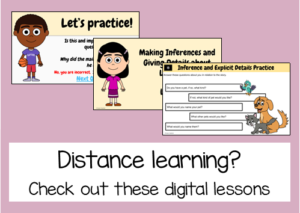 There are many differences, advantages, and disadvantages to the different online class types. I’ve written about some of these here, of course it varies depending on if the class is for elementary students or college students, but in general the information is the same.
There are many differences, advantages, and disadvantages to the different online class types. I’ve written about some of these here, of course it varies depending on if the class is for elementary students or college students, but in general the information is the same.
Synchronous online classes are where students and teachers meet at a designated time and the teacher lectures while the students are actually there and participating. There are many strengths to this type of online class. The biggest strength is that students will receive real-time feedback to their questions. Also, the teacher can adjust his lecture or lesson to the needs of the students. If she sees that the class is too difficult, then he can change the trajectory of the class. One weakness to synchronous classes is that the types of students who can attend at that particular time is limited, so enrollment may be less due to the time constraints. Also, if people around the world are taking the class, you could have someone taking the class at 3am, where others are taking it at 5pm. This could be a disadvantage if the tests or quizzes are during the class time for students in time zones that are farther away from the school.
Asynchronous online classes are classes that are running without a designated time. Students work on the classes independently, whenever they choose, though assignments do have deadlines in most of these types of classes. The biggest advantage is that students from all around the world can access these classes whenever it is convenient for them to do so. Another advantage is that if a student is sick or has an emergency then they can easily make up the work when they can and there will be no penalty for a missed class. Another advantage is that there is no pressure to participate in class. If a child or adult is shy, they can participate when they feel comfortable having more time to write what they’d like to say in a discussion. One disadvantage is that there is a huge independence factor to this. Students who are not disciplined and self-starting may have issues. Another disadvantage is that there is not immediate feedback provided for the students. If they have a question during the lesson, they must wait for a response from a discussion board or from an email. Also, if the lesson is too hard for the week, it will take time for the teacher to notice and adjust.
Blended online classes are a combination of synchronous and asynchronous lessons. This means that some lessons are in real-time and some lessons are done independently at students leisure. The main advantage is that it takes the best from both of the online learning approaches. This means that more people will be able to excel and access the lessons. A disadvantage will still be that some students who cannot attend synchronous lessons due to time zone, work, or obligations will not be able to take the class. Another potential disadvantage is students may get confused or forgetful about which topics or lessons are synchronous and which are asynchronous.



